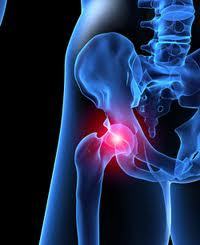As a Texas Medical Doctor and DePuy ASR Failure Attorney, I am providing this update and commentary on a recent British database study.
According to a British database, the National Joint Registry for England and Wales, which tracks hip replacement problems, a number of recalled DePuy ASR metal hip implants are failing within six years. Data from the National Joint Registry for England and Wales indicates that 29% of patients who received the DePuy metal-on-metal hip replacement have reported that they failed after only six years of use.
DePuy Orthopaedics, a division of Johnson & Johnson, issued a DePuy ASR hip recall last year, indicating that about 12% to 13% of these hips mail fail within five years. More than 90,000 DePuy ASR XL Acetabular Systems and DePuy ASR Hip Resurfacing Systems were sold worldwide before the metal-on-metal hip implants were recalled in August 2010. About 40,000 of those were sold in the United States.
Johnson & Johnson currently faces more than 1,000 DePuy metal-on-metal hip lawsuits that have been filed by patients whose devices failed or who have suffered metallosis. According to experts, Johnson & Johnson may have to pay out more than $1 billion in liability over the defective hip devices. Earlier this summer, it was reported that Johnson & Johnson has increased its liability fund by $570 million to cover the cost of DePuy ASR settlements.
All hip implants that use metal-on-metal designs appear to have a higher failure rate than other types of artificial hips. A hip implant is supposed to last an average of about 15 years. But, many all-metal hip replacement systems are failing much faster, causing crippling injuries, metal blood poisoning and often requiring revision surgery to have the devices replaced.
Metal-on-metal hip replacements, which use cobalt and chromium, accounted for about one-third of the 250,000 hip replacements performed in the United States in recent years. But, concerns over metal-on-metal hip replacement and metallosis have caused many orthopedic doctors to move away from the devices in recent months. According to the registry, all types of hip implants, including combinations of ceramic, plastic and metal, have only a 4.7 percent failure rate after seven years. Metal-on-metal hip implants have a failure rate of 14 percent.
As the metal hip replacement ball and socket grind against each other, cobalt and chromium metallic particles may be shed into the body, which can result in metallosis. This may result in soft tissue damage, inflammatory reactions, bone loss, and local necrosis that may lead to the need for a risky hip revision surgery.
The FDA has requested metal hip manufacturers to provide more data on metallosis and metal on metal hip implants.
 Dallas Fort Worth Injury Lawyer Blog
Dallas Fort Worth Injury Lawyer Blog


